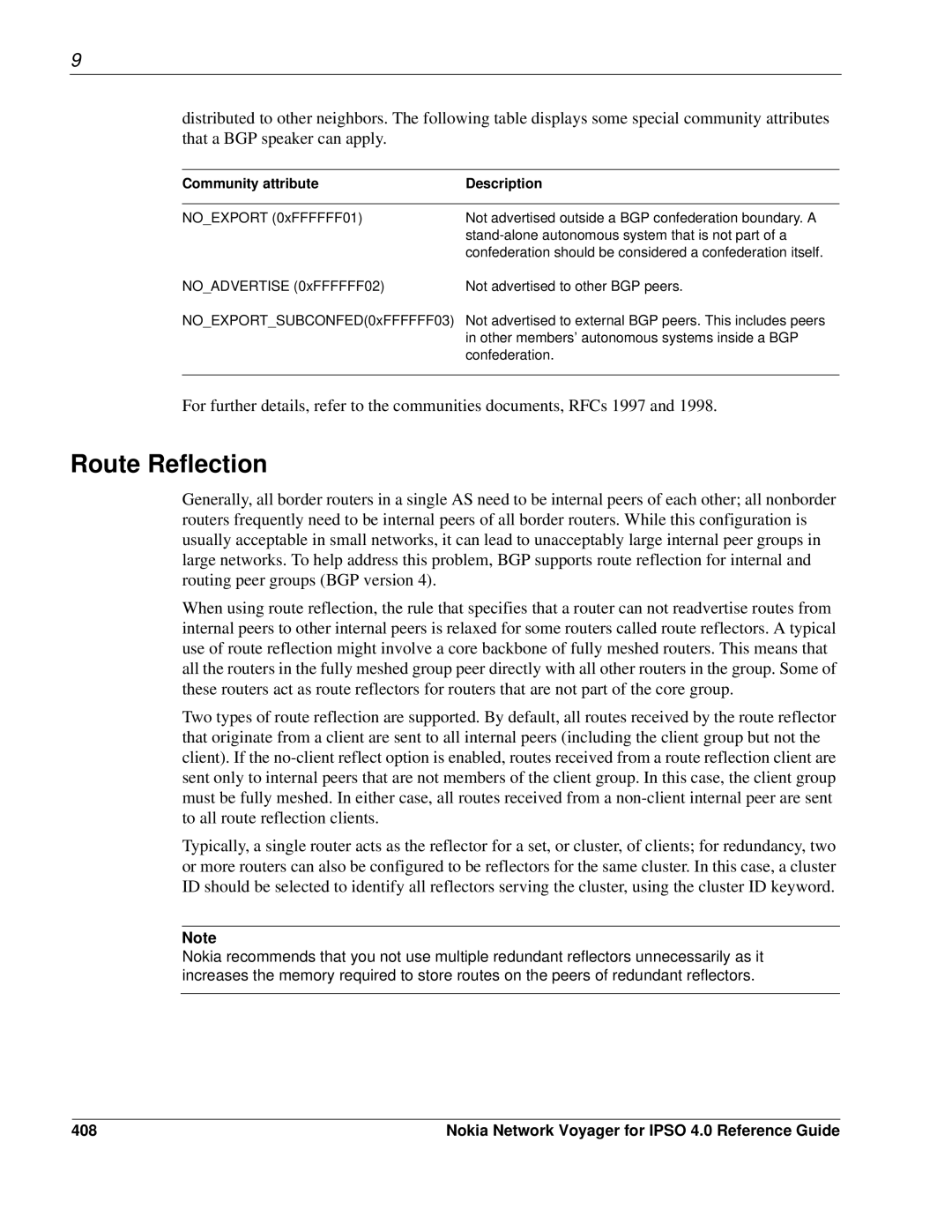
9
distributed to other neighbors. The following table displays some special community attributes that a BGP speaker can apply.
Community attribute | Description |
|
|
NO_EXPORT (0xFFFFFF01) | Not advertised outside a BGP confederation boundary. A |
| |
| confederation should be considered a confederation itself. |
NO_ADVERTISE (0xFFFFFF02) | Not advertised to other BGP peers. |
NO_EXPORT_SUBCONFED(0xFFFFFF03) Not advertised to external BGP peers. This includes peers in other members’ autonomous systems inside a BGP confederation.
For further details, refer to the communities documents, RFCs 1997 and 1998.
Route Reflection
Generally, all border routers in a single AS need to be internal peers of each other; all nonborder routers frequently need to be internal peers of all border routers. While this configuration is usually acceptable in small networks, it can lead to unacceptably large internal peer groups in large networks. To help address this problem, BGP supports route reflection for internal and routing peer groups (BGP version 4).
When using route reflection, the rule that specifies that a router can not readvertise routes from internal peers to other internal peers is relaxed for some routers called route reflectors. A typical use of route reflection might involve a core backbone of fully meshed routers. This means that all the routers in the fully meshed group peer directly with all other routers in the group. Some of these routers act as route reflectors for routers that are not part of the core group.
Two types of route reflection are supported. By default, all routes received by the route reflector that originate from a client are sent to all internal peers (including the client group but not the client). If the
Typically, a single router acts as the reflector for a set, or cluster, of clients; for redundancy, two or more routers can also be configured to be reflectors for the same cluster. In this case, a cluster ID should be selected to identify all reflectors serving the cluster, using the cluster ID keyword.
Note
Nokia recommends that you not use multiple redundant reflectors unnecessarily as it increases the memory required to store routes on the peers of redundant reflectors.
408 | Nokia Network Voyager for IPSO 4.0 Reference Guide |
